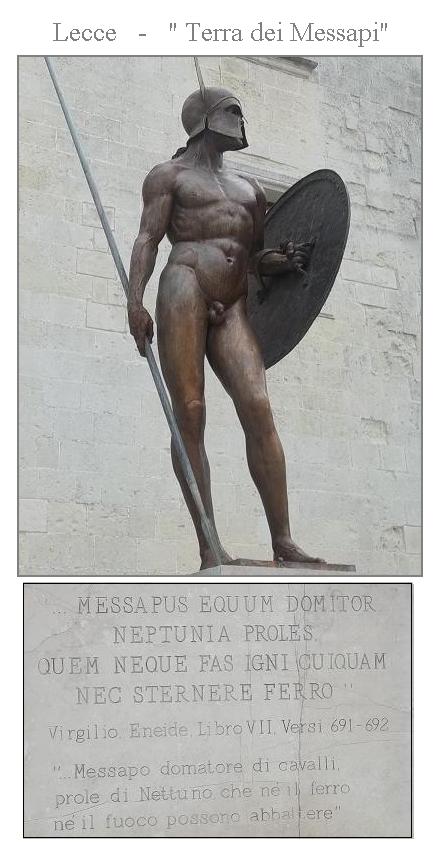Most Theories and Speculations about the Messapians.
The Messapians
The Messapians were the inhabitants of the southern part of the lapigia (Puglia), distinguished by the Peuceti (land of Bari) and the Dauni (land of Foggia) and recognized by the name of Salentini.
We do not know where their name derives from. It is thought to mean "people between two seas" because they had settled in the area south of Puglia, between the Adriatic Sea and the Ionian, and because in their name there is the presence of the sound "ap", as also in lapigi and Apuli which means "water".
It is also thought to mean "horse tamers" (Equorum Domitores, as Virgilio defines them); in fact they bred horses.
Ephoto remembers them as a unitary and ethnically and culturally compact population; in part of his writing , the Messapians are defined as descendants of the Cretans, who pushed themselves along the coasts of Salento, they joined the populations already present, thus founding the first cities and bringing habits and customs that distinguished the Salentini from other populations.
According to modern historians, however, the Messapians were of Illyrian lineage, as would be thought by the ethnic, geographical names, glosses and the language of the Messapian inscriptions, found in Puglia.
They would arrive in Otranto around 1000 BC, as the nearest point to Albania, and then they would descend to S. Maria di Leuca and go up to Taranto. This derives from historical testimonies considered valid because the ancient authors speak of some trips thus carried out.
Even Virgil in the Aeneid, referring to the wanderings of Aeneas, refers to a journey with a similar itinerary.
The ancient historians assigned to the Messapians the entire peninsula from Brindisi and Taranto to the head of S. Maria di Leuca, as evidenced by the linguistic findings.
The Messapian language is known to us by a considerable number of public inscriptions, funeral, votive, numismatic, found in Puglia especially in Salento, written in the Messapian alphabet, which is the Greek of Taranto.
It is an Indo-European language that falls within the group of so-called "satem" languages, that is the Central-Eastern Indo-Europeans, presenting an affinity with today's Albanian. However, we do not know much about the Messapian language, or rather we can read it, but we can not understand it because the symbols, similar to those of the Greek alphabet, form words whose meaning is unknown.
Not long ago, on the occasion of the revision of the knowledge about the peoples who, in the centuries before the birth of Rome, have inhabited the Italian peninsula and the Salento in particular, we began to talk about the Messapians or, rather, the "Sphinx Messapica", as it is a mysterious people that scholars are still searching for their secure origins and identity.
"Nobody knows much about the Messapians and what little we know is so small and thin to look that is practically nothing. "These are the words of Oronzo Parlangeli, who devoted a large part of his studies to this mysterious people; hence the comparison with the Sphinx or, daring a little, with the Etruscans.
In fact, it is known that, like the Etruscans, it was a proud people and bearer of its own independent civilization, but when the Romans arrived, they could not bear the impact, so they slowly disappeared.
(in Italian)
http://www.aikidoweb.it/public/?Cultura___I_Messapi




 Reply
Reply


